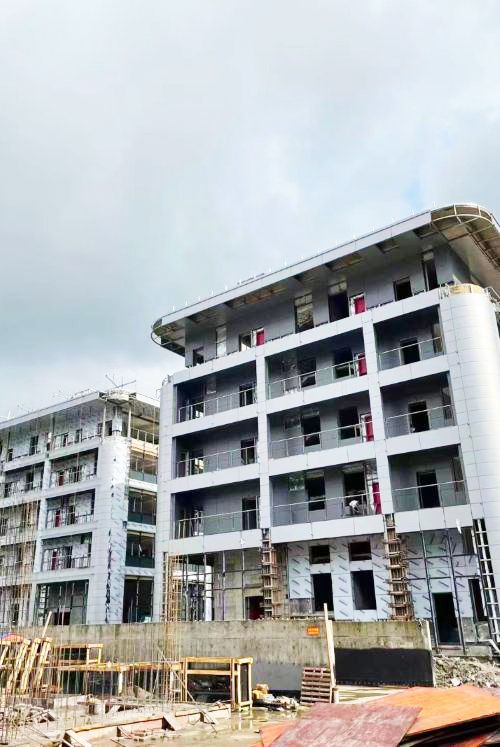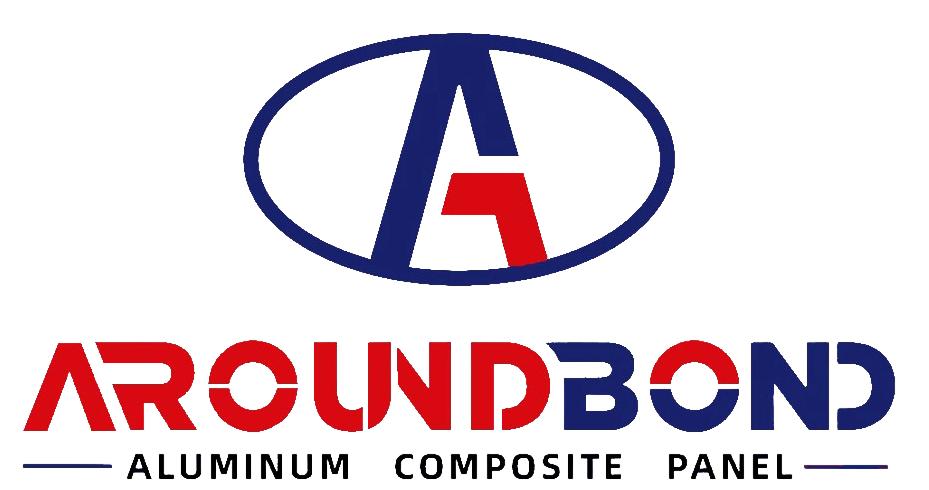Comprehensive Introduction to Aluminum Composite Materials (ACM Panels)
Comprehensive Introduction to Aluminum Composite Materials (ACM Panels)
1. Definition and Basic Structure
Aluminum Composite Materials (ACM), also known as Aluminum Composite Panels (ACP), are flat sandwich panels consisting of two thin aluminum sheets bonded to a non-aluminum core (typically polyethylene (PE), mineral-filled thermoplastic, or fire-resistant polymers). The aluminum surfaces are coated with protective layers such as PVDF (polyvinylidene fluoride) or polyester paint, enhancing durability and aesthetic versatility. Standard thicknesses range from 3mm to 6mm, with exterior cladding commonly using 4mm panels (0.5mm aluminum layers + 3mm core).

aluminum composite panel
2. Key Characteristics and Advantages
Lightweight yet Robust: ACM panels weigh 3.5–5.5 kg/m², reducing structural load while maintaining high rigidity. For example, 4mm ACM matches the stiffness of 3.3mm aluminum solid sheets but is 40% lighter.
Fire Resistance: Core materials like mineral polymers enable B1 (difficult-to-burn) or A2 (non-combustible) fire ratings, crucial for high-rise buildings and secure facilities (e.g., airports, hospitals).
Weather and Corrosion Resistance: PVDF coatings provide superior UV stability, pollution resistance, and color retention for over 20 years, even in extreme climates.
Ease of Fabrication: ACM can be cold-bent (min. radius: 2mm), cut, routed, or perforated using standard woodworking tools, enabling complex geometries like curves and faceted designs.
Aesthetic Flexibility: Available in metallic finishes, wood grains, stone textures, mirror effects, and custom colors (e.g.,幻彩系列/holographic series).
Table: Core Material Types and Properties
Core Type Fire Rating Key Applications
Polyethylene (PE) Standard Indoor signage, partitions
Fire-retardant PE B1 Commercial interiors
Mineral Polymer A2/B1 High-rise façades, public buildings
3. Classification and Applications
ACM panels are categorized by function, surface finish, and usage:
By Function:
Fireproof ACM: Mineral cores for A2/B1 certification (e.g., curtain walls in skyscrapers).
Antibacterial ACM: For hospitals and labs.
Antistatic ACM: Used in electronics manufacturing.
By Surface Finish:
Standard/Metallic: PVDF-coated for exteriors.
Natural Mimicry: Wood, stone, or concrete textures.
Special Effects: Mirror, brushed metal, or holographic finishes.
Primary Applications:
Building Exteriors: 70% of ACM use is for façade cladding (e.g., Shanghai Zhangjiang Tech Port, Hangzhou Raffles City).
Interiors: Ceilings, partitions, and kitchen/bathroom panels.
Signage and Advertising: Lightweight, printable surfaces for billboards.
Transport/Industrial: Vehicle linings, tunnel ceilings.
Table: Thickness Guidelines by Application
Application Recommended Thickness Aluminum Thickness
High-rise façades 4mm 0.5mm per side
Interior partitions 3mm 0.2–0.3mm per side
Advertising boards 3–4mm 0.25mm per side
4. Manufacturing and Quality Standards
ACM production involves thermobonding aluminum coils to cores under controlled heat/pressure. Key certifications include:
ISO 9001: Quality management.
GB/T 17748-2008 (China): Mandates 4mm thickness and 0.5mm aluminum for exterior panels.
ASTM standards (Global): For peel strength (>5 N/mm) and impact resistance.
5. Installation and Sustainability
Installation: Most ACM systems use open-joint dry cladding for thermal expansion management and reduced maintenance.
Eco-Impact: ACM’s longevity (20+ years) and recyclable aluminum layers (up to 85% recoverable) support green building certifications like LEED.
6. Industry Trends and Innovations
FOPLP (Fan-Out Panel Level Packaging): ACM-derived tech for semiconductor plating.
Dynamic Cores: Hybrid materials enhancing acoustic/thermal insulation.
Digital Printing: UV-curable inks for customized large-scale graphics.
Conclusion
ACM panels merge aesthetic versatility with engineering resilience, making them indispensable in modern architecture. From transforming skylines (e.g., Guangzhou’s CTF Finance Centre) to enabling cost-effective retrofits, their evolution continues to align with demands for safety, sustainability, and design innovation. As material science advances, ACM’s role in smart cities and eco-construction will further expand.


